FARM TO TABLE
Good, better, bobotie: The hard life behind that fresh farm egg
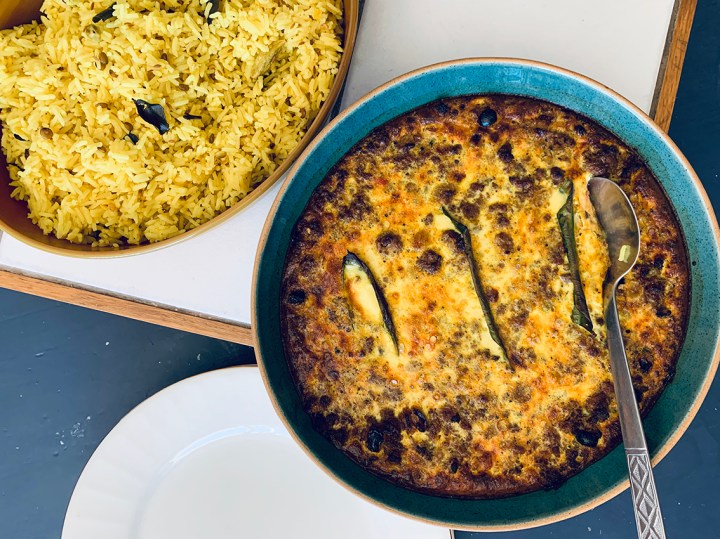
Free-range farm chickens may be fat and wholesome, and their eggs more nutritious ... but they sure as hell do not live the glorious, carefree lives pictured in those idyllic Farmer Brown ads. At least not on real farms.
A farm is not a farm if it doesn’t have at least half a dozen chickens picking and hoeing away in the garden. It needs to have its own supply of freshly-laid eggs, enough for daily breakfast and the occasional cake or milk tart treat. This is according to my dad, who has been trying to keep up this chicken dream of his for as long as I can remember.
He’s always bringing back fat brown hens from livestock auctions and agricultural shows… eager to let them roam and roost and, most important, lay eggs in the quaint little chicken coop at the far end of the garden. It’s the perfect picture of farm-to-table living.
But the life of a free-range chicken is not what people tell you. It’s a constant struggle for life.
Our beautiful, fat hens are often a few tailfeathers short. If we’re not battling to keep the dogs from chasing the frantic birds up and down across the lawn, we have to hunt down feral farm cats to release fluffy yellow chicks from their jaws. And then, if the hens live to even lay eggs… we’re competing with monkeys and puff adders and Cape monitor lizards for them.
There’s really no way to sugarcoat this. Free-range farm chickens may be fat and wholesome, and their eggs more nutritious… but they sure as hell do not live the glorious, carefree lives pictured in those idyllic Farmer Brown ads. At least not on real farms.
Hence, our (remaining) farm chickens have become adapted specifically for their environment – they can run like the wind and will fight off any feral thing that dares come close to their hatchlings, human children included. We’ve helped them, too. The chicken coop is now a fence-vault with monkey boobytraps and deterrents for snakes and other reptiles.
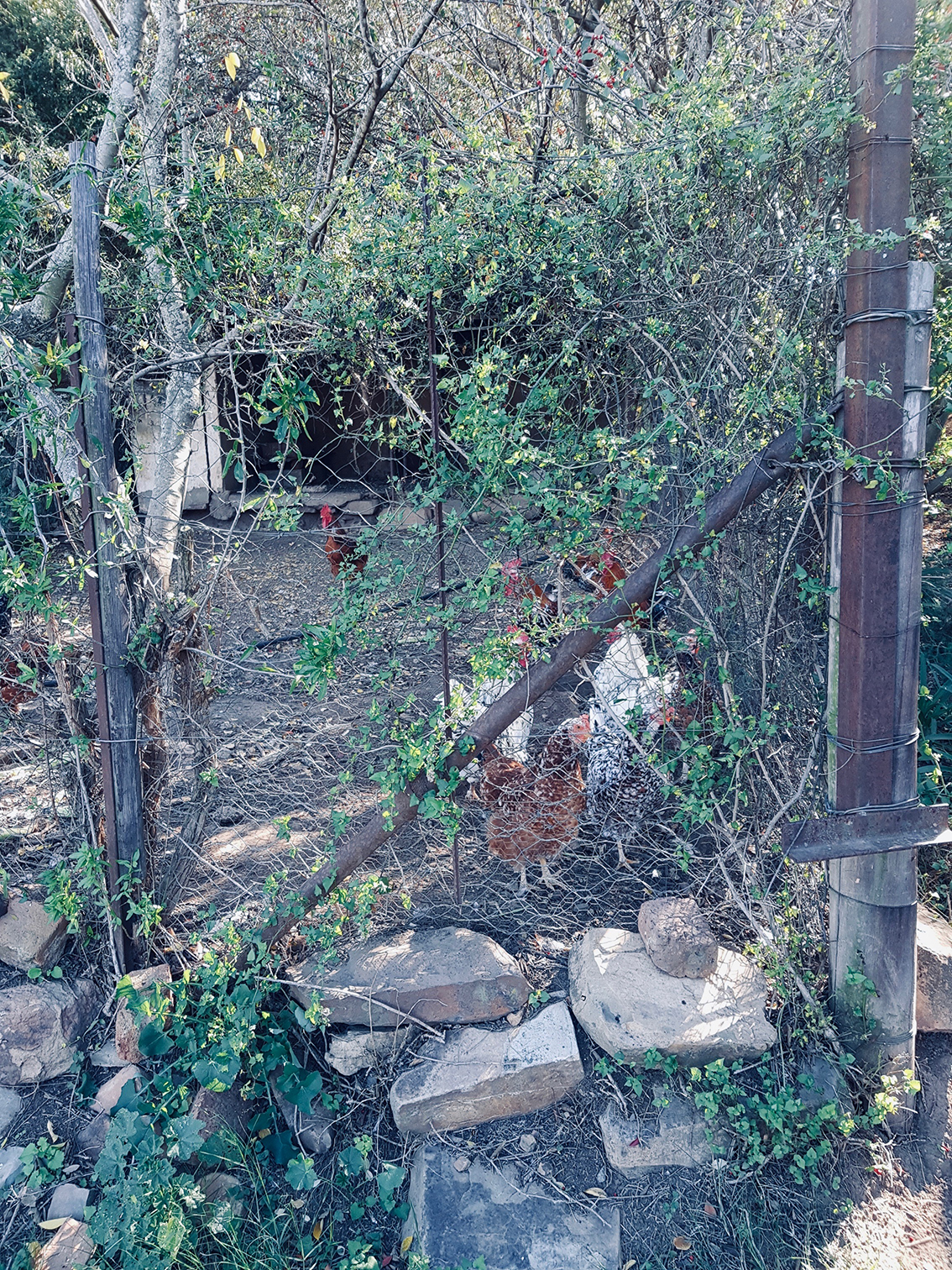
The chicken coop aka chicken vault… large stones, a bitter thorny creeper and mesh wire all secure the hens’ nightly retreat. Photo: Louzel Lombard Steyn
The result is a symbiotic relationship in which both parties thrive. Eggs are plenty enough to sustain every household on the farm… and then there are leftovers. Too many to ever scramble or poach or fry.
Eggs are versatile and incredible in every way imaginable; what I like to call “the original superfood”.
They’re an excellent source of protein but are significantly easier and faster to produce than their meaty counterparts; a much smaller eco-footprint. Eating eggs also does no harm to the chickens involved – or their offspring for that matter. Unfertilised eggs are of no value to hens, unlike the fertilised ones out of which chicks hatch. From a few happy hens, you can have a continuous supply of cruelty-free protein… each one neatly wrapped in a biodegradable, long-life shell.
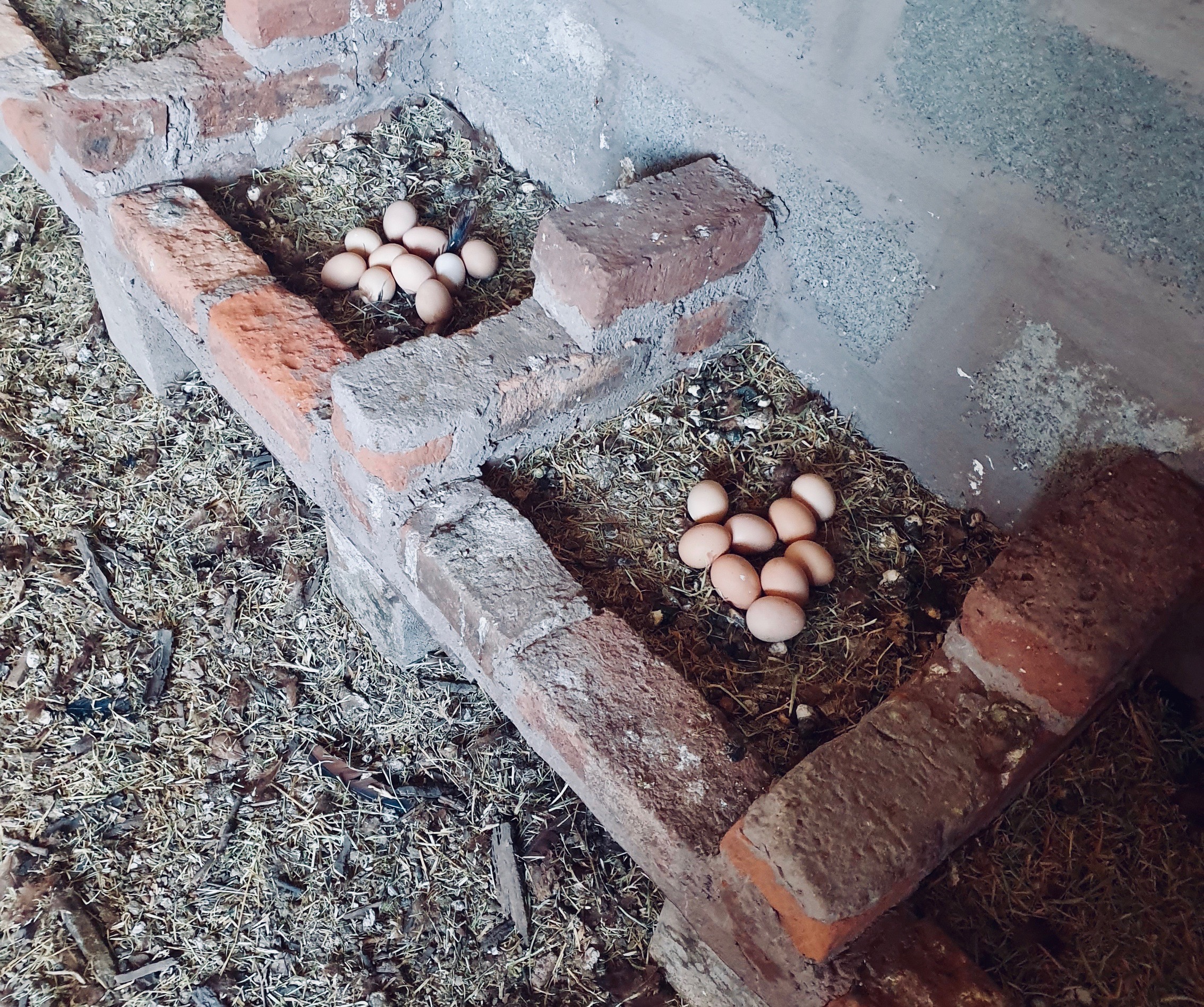
Eggs galore! A symbiotic relationship ensures happy hens and a continuous supply of farm fresh eggs. Photo: Louzel Lombard Steyn
Apart from their “green” qualities, eggs go a long way for eating purposes too. Literally. My family never drives anywhere without taking along some hard-boiled eggs for the journey. They’re a treat with fresh sandwiches and Cremora coffee on a roadside stop. Starring alongside boerewors, smoor and krummelpap, eggs epitomise a real boere breakfast for any South African.
But their magic doesn’t stop there. Eggs are also binding agents for cakes and tarts, custards and cremes. Separate the egg white from the yolk, and you have two entirely new products each with their own nutritional values and purposes. Whipped with castor sugar, egg whites transform into fluffy meringues. Or add some liquid sugar in soft-ball stage to make your own nougat. Yolks, again, will emulsify with oil to create thick, creamy mayonnaise. Or react with the acids in fruits to produce tangy curds. Magic, I tell you.
One dish that celebrates eggs and combines not only our incredible South African produce but also our South African heritage, stands out. It’s been heralded as the National Dish of SA. Honestly, I think it’s a little weird… I mean, who pours glorified scrambled eggs over curried meat and milk-soaked bread and then flavours it with lemon leaves!? South Africans, that’s who! And boy, do we love our bobotie.
As with the beloved sosatie, inspiration for bobotie came to SA’s shores with the slave trade of the Dutch East India Company.
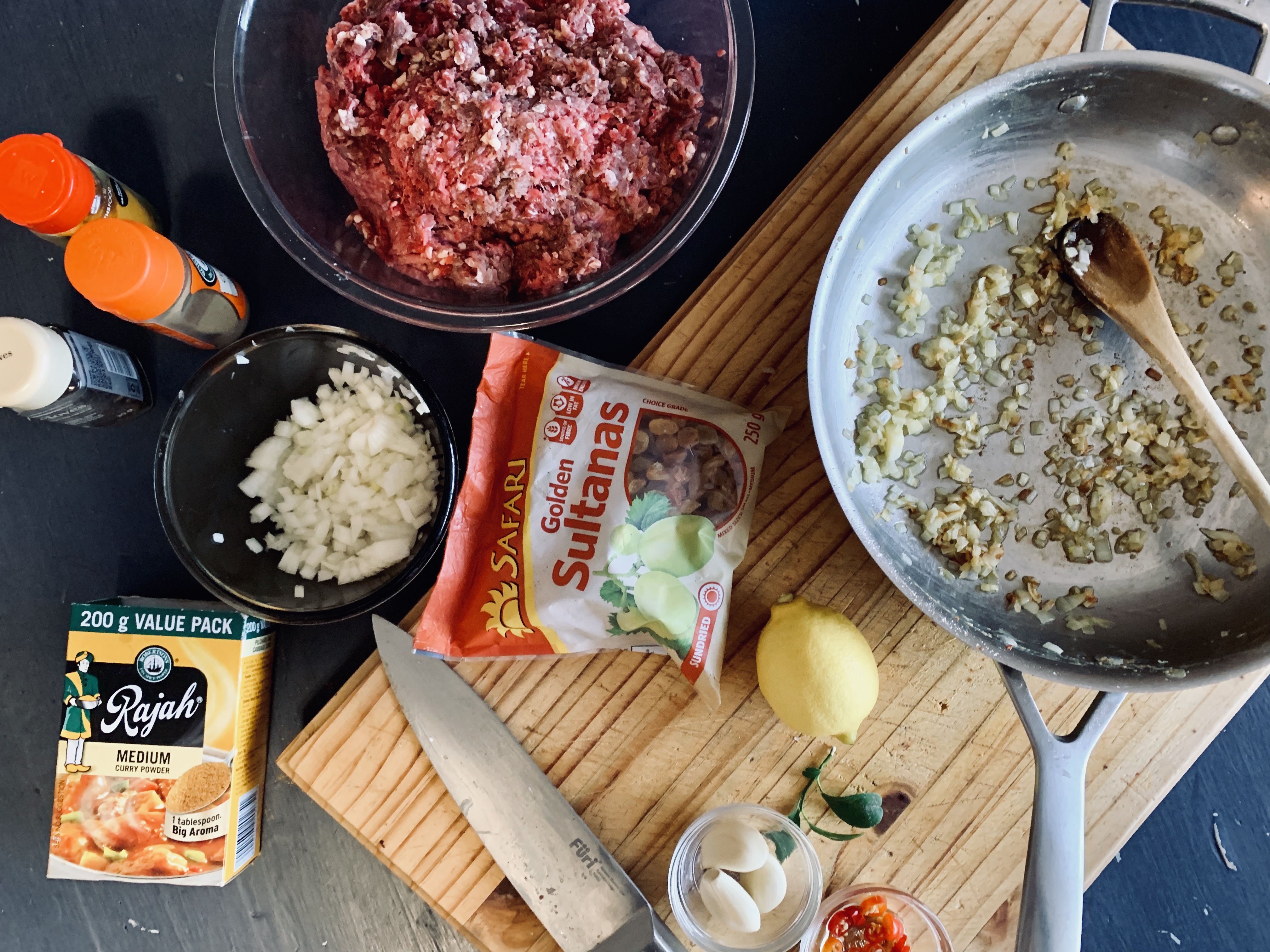
The start of bobotie; a fragrant affair. Photo: Louzel Lombard Steyn
According to the legendary Malay food pioneer Cass Abrahams, bobotie was first considered to be kombuiskos (kitchen food), not worthy of serving to guests. However, that all started to change in the 50s when the United Nations Women’s Organisation listed it as South Africa’s national dish. “It gave bobotie a bit more gravitas,” Cass says.
“There are mainly three theories about where bobotie comes from. Some people say it originated in Persia, but that theory doesn’t sit well with me,” Cass says.
“Another theory is that bobotie came about as a way of preserving food before there were refrigeration facilities. Leftovers from a typical Sunday leg of lamb would be shredded and flavoured with spices and fruits in order to mask any odd smells. Importantly, the dish would then be baked again so that any developing bacteria (eek!) would die down in the heating process.”
To bind everything together in a flavoursome way, eggs provided moisture and structure to this dish.
This may sound crazy – even dangerous – but curry powders and vibrant spices have long been used as a way of preserving foods. Especially in countries with extremely hot and/or humid climates (think of South Africa, India, Ethiopia, Indonesia), spicy foods mark a great part of food culture.
Cass prefers the third theory, however.
“When I was in Malaysia, I ate a dish called Bobotok. It was ground meat with spices that was put into a banana leaf and cooked over the open fire. For me, it makes sense that this is where bobotie came from originally.”
The early Cape Malay cooks, when first shipped to South Africa, substituted Malaysian ingredients with what was available. Lemon leaf had to stand in for lemongrass and lemon basil, while the Dutch fondness for minced meat made an ideal key ingredient. Even the use of butter for frying in onions and spices nods to French cuisine. The addition of raisins added that desired Malaysian sweetness, but with local flair.
The egg custard then serves as a blanket to cover all and while it bakes, the golden crust is fragranced with all those wonderful spices. It’s not only a binding agent but also a carrier of all the subtle aromas.
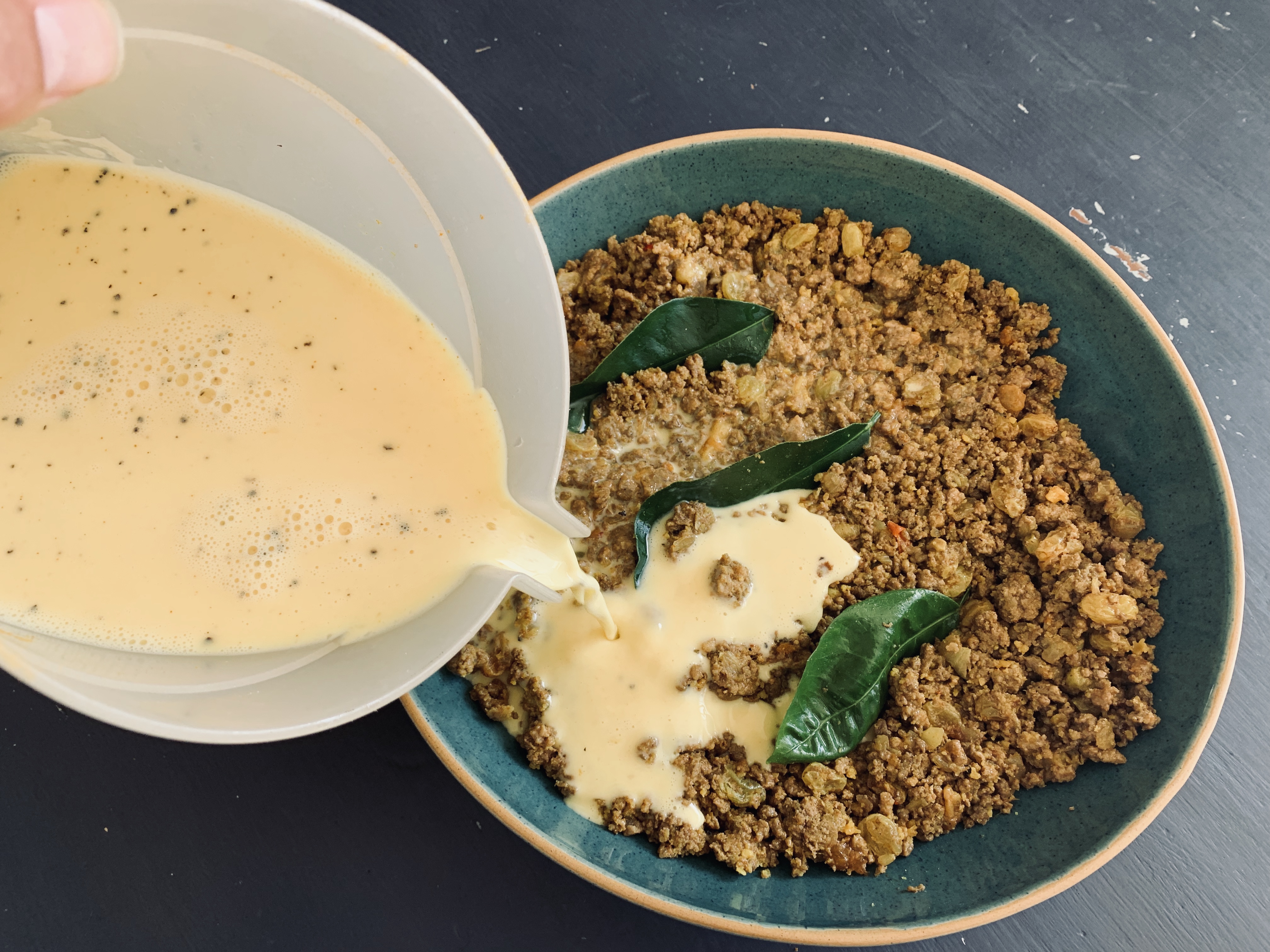
Pour over the egg custard until the mixture is entirely covered. The egg will ensure moisture stayed locked in while cooking. Photo: Louzel Lombard Steyn
“A plate of food can tell you everything you need to know about a country,” Cass says. “It tells you how poor or wealthy it is, what the geography of the land is, the climate… as well as its history. When you eat bobotie, you go back in history.”
Cass says her bobotie is very different from other peoples’ as it contains no bread.
“I don’t like dry bobotie, and as soon as you add bread, it sucks out all the moisture from the meat and sauces.”
She also prefers ostrich mince for its healthy yet flavourful qualities.
Some variations of bobotie are worthier than others. Cass’s sits at the very top of the pyramid, while the typical Tuesday lunch in boarding school fell into the lesser category, unfortunately. However, it illustrates perfectly how deeply ingrained bobotie is into South Africans’ lives.
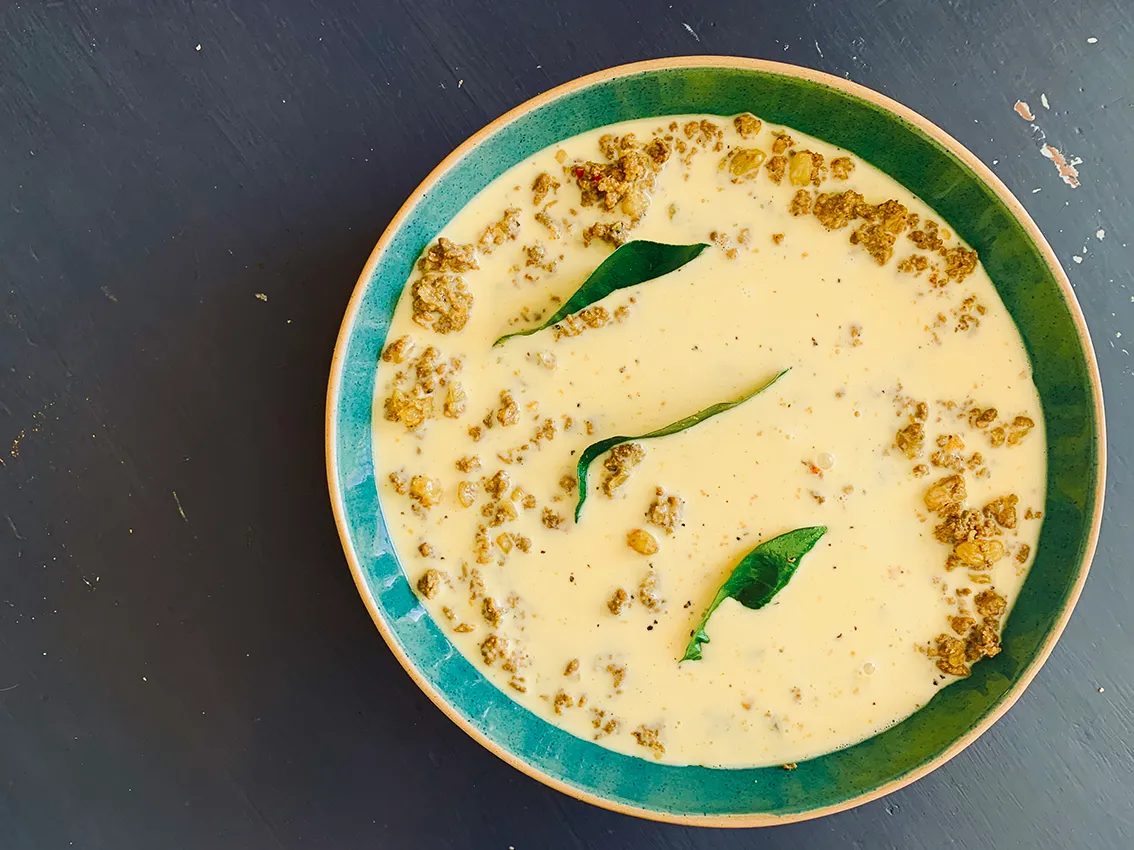
Ready for the oven. Bake until golden brown. Photo: Louzel Lombard Steyn
The story of bobotie is a metaphor for our incredible South African heritage. It’s a mixture of typically unrelated, vastly different ingredients all tied together by one highly adaptable ingredient. Beef, bread, raisins, lemon leaf, spices, herbs and egg. Malay, Indonesian, European and African, all baked together to produce a unique and distinctly South African flavour that’s sweet, spicy and just plain lekker.
Try your hand at this lovely, fragrant recipe:
Bobotie

Bake until puffy, golden & delicious. Photo: Louzel Lombard Steyn
1 Tbsp butter
1 large onion, finely chopped
1kg coarsely ground beef mince
2 cloves garlic, finely chopped
1 tsp ginger, grated
2 tsp Rajah Medium Curry Powder
1 tsp turmeric, ground
2 tsp cumin, ground
2 tsp coriander, ground
2 whole cloves
1/2 cup raisins or sultanas
1/2 cup chutney (preferably Mrs Balls)
1 Tbsp fresh parsley, chopped
salt and pepper to taste
4 lemon leaves
2 cups full cream milk
6 large eggs
Sauté the onion in the butter until soft and translucent. Add the garlic, meat and spices and fry until fragrant and cooked through. Add the raisins/sultanas, chutney and parsley and mix thoroughly. Add salt and pepper to taste. Transfer the mince mixture to an ovenproof dish and press down slightly with the back of a spoon. Neatly place lemon leaves into the mince mixture.
Whisk together milk and eggs and gently pour over the dish. Bake in the oven until the egg mixture is set and golden brown.
Serve on yellow rice with more chutney, desiccated coconut and sliced banana (if preferred). DM






 Become an Insider
Become an Insider